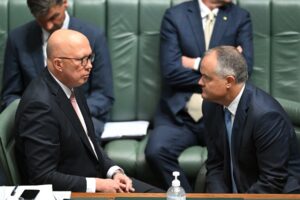The West Australian Coalition has flagged it may slug solar households in the state with higher fixed network charges as it seeks to reign in its massive budget deficit and deals with large subsidies to the main energy retailer.
WA currently subsidises the cost of electricity to consumers – which in WA is almost entirely fossil-fuelled – to the tune of more than $300 million a year.
It has flagged higher fixed network charges – or possibly the introduction of demand charges – to try to reduce the subsidy and address declining revenue caused by falling demand, the result of an increase in rooftop solar and energy efficiency.
But it is also flagging that those fixed network charges might be higher for households with rooftop solar. Right now, there are 175,000 homes with rooftop solar in WA, with a total of 430MW installed.
Energy minister Mike Nahan, the former chief of conservative think tank Institute of Public Affairs, told parliament this week that a higher fixed charge would apply across the board, meaning some users – particularly those with solar panels or who use little power from the grid – would face higher costs.
“If we increase the fixed charge and decrease the variable charge, they [solar users] might be [facing higher charges],” Nahan said. “The balancing act hasn’t been decided. It’s premature to say that re-balancing will discriminate against solar cell owners.”
But there is speculation that the network charge for solar households will be higher, or least that the proportion of network costs will be increased.
Channel Nine in Perth said Nahan was looking at different network charges for solar, forcing them to pay a higher fixed tariff than other households.
Ray Wills, from Future Smart Energy, said if the government did that, they would have to extend higher fixed charges to users of air conditioners as well.
“If you started charging solar households for connecting panels to the network, you would have to start charging people for using LED light globes, because the effect on grid demand is the same,” he said.
In 2013, the Queensland Competition Authority (QCA) proposed exactly that – an increase in fixed charges of $210 per year on electricity customers who had installed PV. But it withdrew the proposal when some retailers said the measure might encourage consumers to leave the grid entirely.
Still, the electricity industry has been pushing for higher fixed charges, even though network charges can sometimes make up virtually the entire bill for some households. It has argued that solar is a big transfer of wealth from one consumer to another.
The Warburton report last year suggested the renewable energy target, which supports rooftop solar, was a transfer of wealth from coal-fired generators to consumers. Some retailers now offer smaller discounts to solar households.
A similar fight is going on in the US, where Arizona has introduced a fixed charge for solar households, but is being sued by SolarCity, one of the biggest installers of rooftop solar in the country.
Industry observers say that the WA government is between a rock and a hard place on electricity, because the true cost of the grid has never been passed on to consumers, as a result of the government subsidy that once stood at more than $600 million.
Indeed, the WA grid is described as one of the most unsustainable in the world, because of its reliance on coal and gas, both of which are becoming more costly, and on an ageing grid.
The issue was heightened by recent events from Cyclone Olwyn, where many commercial business suffered substantial losses because the grid was down for three days in some areas around Carnarvon. Stand-alone solar and battery storage systems, such as this one installed last year, continued to supply power unaffected.
It is not the first time the WA government has sought to recoup funds from solar households. In 2013, just before the federal election, it proposed reneging on solar feed-in tariffs to save $50 million, a move it quickly reversed following a backlash from consumers and the federal Coalition, as we documented in our story Dumb, dumber and conflicted: Behind WA’s solar shocker.
Meanwhile, to reduce the subsidy that is paid to the state utilities out of consolidated revenue, the WA government would need to either increase tariffs or write off generation assets, and neither of these are politically palatable.
“Applying a capacity charge to residential consumers would probably apply across the board to all consumer, thereby not discriminating against houses with PV, but it seems the intention would be for houses that have low usage, maybe because they have PV, to pay more in the form of a fixed charge,” one industry insider said.
“If this goes through then it should be interesting when people with low usage get an electricity bill, and they divide total dollar amount by total kWh usage, we’ll start seeing some very high $/kWh figures out of the solar households.”
WA Premier Colin Barnett had promised at the last election in 2013 to peg any electricity price rises to inflation, but now says that promise only applied to the first year of office, not to the entire four-year term of government.
In any case, electricity prices rose by 4.5 per cent last year, and are forecast to rise 7 per cent in each of the next three years.
The WA government is expected to release the final report of its electricity review later this month. It was originally scheduled for last October.
However, the draft did not instill the renewable energy industry with much confidence. Despite claiming to be “technology neutral”, the report focused almost entirely on coal and gas, even canvassing the possibility of importing coal from Indonesia. The report did not mention solar once.












